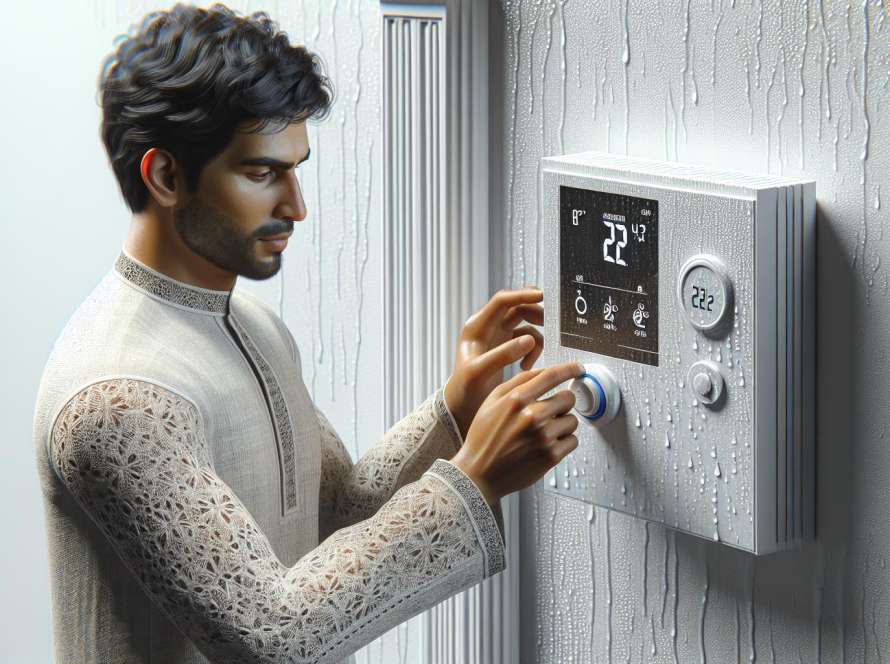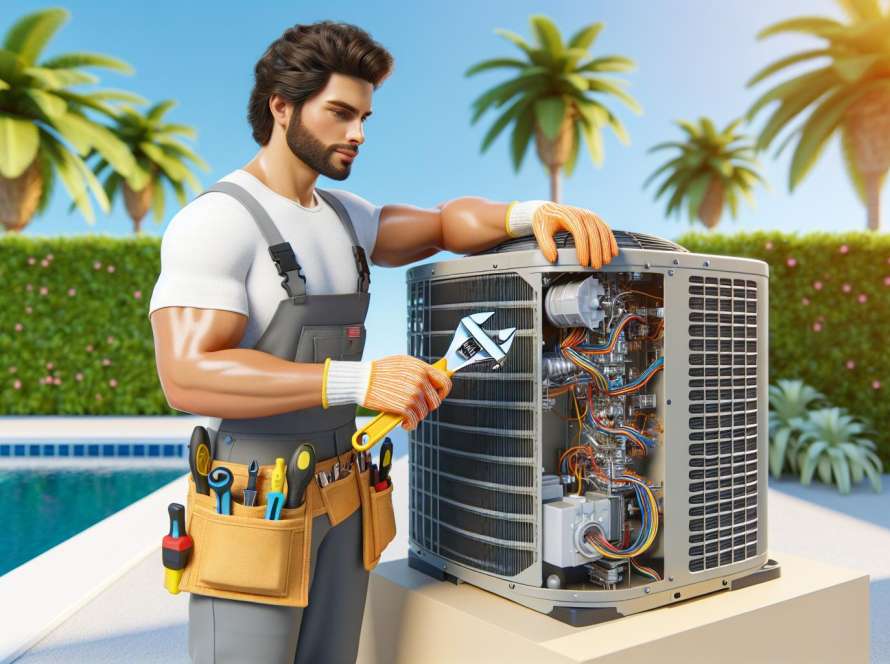So, it’s that time of year again in Florida when the sun’s shining bright, and the temperatures are soaring. With our AC units working hard to keep us cool, it’s essential to ensure they’re in top shape. That’s why we’ve put together a seasonal AC maintenance checklist specifically tailored for the Sunshine State. From checking the air filters to inspecting the outdoor unit, we’ve got you covered with all the must-do tasks to keep your AC running smoothly all season long.
Importance of Seasonal AC Maintenance in Florida
Living in Florida means battling high temperatures year-round, emphasizing the essential need for properly functioning air conditioning units. Neglecting seasonal AC maintenance can lead to inefficiencies, breakdowns, and ultimately, discomfort. To ensure our AC units perform optimally, we must prioritize seasonal maintenance to stay cool and comfortable in the Sunshine State.
Why Regular Maintenance Matters
- Energy Efficiency: Regular maintenance keeps your AC running efficiently, reducing energy consumption and lowering utility bills.
- Extended Lifespan: Proper care prolongs the lifespan of your AC unit, saving you money in the long run by delaying the need for costly replacements.
- Improved Air Quality: Routine maintenance includes cleaning or replacing air filters, which helps maintain good indoor air quality and reduces allergens.
- Preventive Maintenance: Identifying and fixing minor issues before they escalate into major problems helps in avoiding unexpected breakdowns.
The Florida Factor
In Florida, where AC units work overtime due to the persistent heat, seasonal maintenance is not just an option but a necessity. The humidity and high temperatures increase the workload on AC units, making them more prone to wear and tear. As Floridians, we must prioritize seasonal AC maintenance to ensure our units can handle the demanding climate effectively.
By staying proactive with our maintenance tasks, we can enjoy a cool and comfortable indoor environment year-round, even amidst Florida’s scorching temperatures. Remember, a well-maintained AC unit is a key to surviving the Florida heat without breaking a sweat.
Checking and Changing the Air Filters

Are you ready to tackle one of the most crucial steps in maintaining your AC system in Florida? Keeping a close eye on your air filters is essential for ensuring optimal performance and indoor air quality. Let’s dive into different levels of guidance tailored to your experience in handling this task effectively.
For Beginners: Basic Filter Care
- Start by locating your air filter. Usually, it’s found behind the return air grille on the wall or ceiling.
- Check the filter every 30 days, especially during peak AC usage months in Florida.
- If the filter looks dirty or clogged, it’s time to change it. Follow the manufacturer’s instructions for the correct filter type.
For Intermediate DIY Enthusiasts: Enhancing Filter Maintenance
- Consider upgrading to high-efficiency filters for better air quality, especially if you have allergies or pets.
- Keep a stock of filters on hand to ensure timely replacements.
- Vacuum or dust the return air grille before installing a new filter to prevent debris from entering the system.
- Note the filter size, type, and the direction of airflow before purchasing replacements.
- Invest in reusable, washable filters for long-term cost savings and reduced environmental impact.
- Schedule filter inspections as part of your routine maintenance checklist.
- Consider installing a whole-house air purification system for comprehensive indoor air quality control.
- Explore smart thermostats that remind you when it’s time to check or change the filter.
We’ve covered essential tips tailored to different skill levels to help you master air filter maintenance for your AC system in Florida. Keeping your filters clean and promptly replacing them when needed is a key step in ensuring your AC unit operates efficiently and effectively.
Inspecting the Outdoor Unit for Debris
When it comes to AC maintenance in Florida, one crucial task is Inspecting the Outdoor Unit for Debris. This step is essential in ensuring that your system operates efficiently in the heat of the Florida climate. Let’s dive into the specifics for beginners, intermediate DIY enthusiasts, and experts.
For Beginners: Basic Inspection Steps
- Locate the outdoor unit: Find where your AC’s outdoor unit is placed in your home.
- Clear the area: Remove any debris, vegetation, or obstructions around the unit.
- Visually inspect: Look for leaves, branches, or any objects that may have gotten lodged in the unit.
For Intermediate DIY Enthusiasts: Enhanced Maintenance Tips
- Check for dirt and grime: Wipe down the exterior of the unit to remove dirt buildup.
- Inspect the fins: Ensure the fins on the unit are straight and not bent, as this can impact airflow.
- Trim vegetation: Maintain a clear perimeter around the unit for optimal airflow.
- Clean the coils: Use a coil cleaner to remove dirt and debris from the coils for improved heat exchange.
- Inspect refrigerant lines: Check for any signs of wear or leaks in the refrigerant lines.
- Invest in a protective cover: Consider using a cover during the off-season to prevent debris buildup.
By following these inspections and maintenance steps, you can ensure that your AC unit remains in peak condition, providing reliable cooling during Florida’s hottest months. Maintenance is key to extending the lifespan of your system and avoiding costly repairs in the long run.
Clearing the Condensate Drain Line
When it comes to AC maintenance in Florida, clearing the condensate drain line is a crucial step in keeping your unit functioning optimally. This task helps prevent potential water damage and mold growth, ensuring your AC system operates efficiently.
For Beginners: Simple Steps to Get Started
- Locate the condensate drain line near the indoor air handler.
- Use a wet/dry vacuum to suction out any blockages.
- Pour a mixture of bleach and water down the drain to prevent algae buildup.
For Intermediate DIY Enthusiasts: Enhancing Drain Line Maintenance
- Inspect the drain line for any kinks or obstructions that may impede water flow.
- Consider installing a vent tee to improve airflow and reduce the risk of clogs.
- Regularly flush the drain line with a vinegar solution to keep it clean and clear.
- Use a high-pressure air compressor to blow out stubborn blockages in the drain line.
- Install a condensate pump to efficiently remove excess moisture from the system.
- Consider adding a condensate line treatment to prevent microbial growth and odors.
By Clearing the Condensate Drain Line as part of your seasonal AC maintenance routine, you can ensure that your AC unit operates smoothly and efficiently, providing reliable cooling during Florida’s hot weather. Remember, regular maintenance is key to extending the lifespan of your system and avoiding costly repairs.
Testing the Thermostat and Airflow

Testing the thermostat and airflow is crucial in maintaining your AC system’s efficiency and performance. Below, we provide tailored tips for beginners, intermediate DIY enthusiasts, and experts to ensure your unit operates at its best.
For Beginners: Mastering the Basics
- Verify Thermostat Operation: Check if the thermostat is set to cool mode and lower than the current room temperature.
- Checking Airflow: Ensure that air vents are unobstructed to promote proper airflow.
- Simple Thermostat Calibration: Follow manufacturer instructions to calibrate the thermostat for accurate temperature readings.
For Intermediate DIY Enthusiasts: Enhancing Your System
- Calibrating Thermostat: Use a thermometer to compare the thermostat’s reading with the actual room temperature for accuracy.
- Inspecting Ductwork: Look for leaks or loose connections in the ductwork that could reduce airflow efficiency.
- Cleaning Air Filters: Replace or clean air filters monthly to maintain optimal airflow and system performance.
- Investing in Smart Thermostats: Upgrade to a smart thermostat for precise temperature control and energy efficiency.
- Conducting Airflow Tests: Use an anemometer to measure airflow at each vent and adjust dampers for balanced airflow.
- Thermostat Programming: Set up a programmable thermostat to optimize cooling when needed and save energy when away.
Remember, regular testing and maintenance of thermostat and airflow are key to extending the lifespan of your AC system and ensuring a comfortable indoor environment.
Conclusion
Ensuring your AC system is in top condition is key to beating the Florida heat. By testing the thermostat, checking airflow, and calibrating as needed, you can optimize efficiency. Whether you’re a novice or a seasoned DIYer, there are steps you can take to maintain your system. From verifying thermostat operation to investing in smart thermostats, each action plays a crucial role. Regular maintenance is vital for prolonging your AC’s lifespan and keeping your indoor environment comfortable. Stay proactive with these tips to enjoy cool, refreshing air year-round in the Sunshine State.

